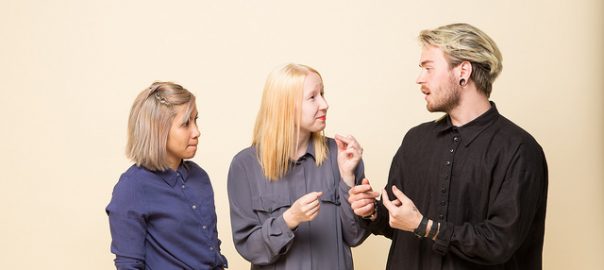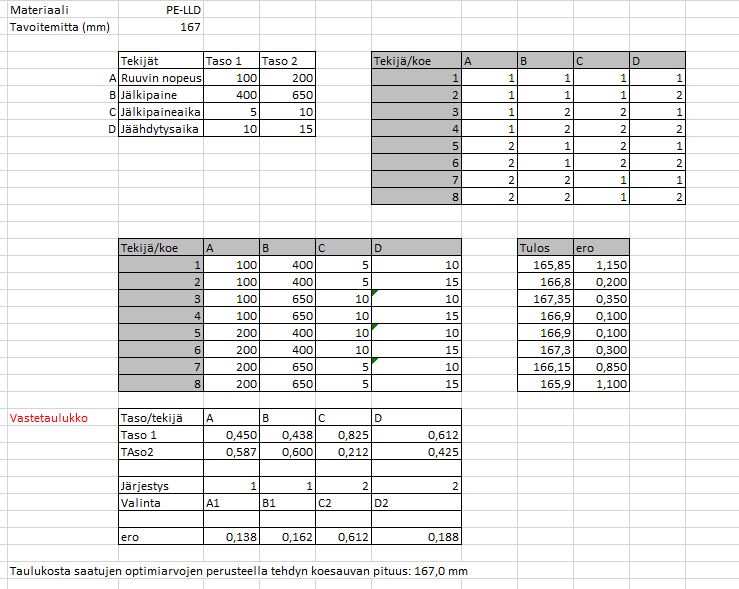 |
 |
The Open DigiCampus project (2017–2018), funded by the KIRA-digi programme, boosts the digitalisation of the built environment and construction sector by creating an open and interoperable information management ecosystem for the built environment. The KIRA-digi programme is the Government’s key programme involving ministries, municipalities and the KIRA forum. The project focuses on digitalisation of the new campus of the Lahti University of Applied Sciences and this article describes the technological challenges of the digicampus.
Authors: Timo Turunen, Satu Hyökki, Hannu Kaikonen & Minna Asplund
Introduction
Lahti University of Applied Sciences has been building a new campus, which is based strongly on future working needs in study, research and administrative work. One starting point is to enable an appropriate and flexible working environment, which is supported by digitalisation. One aim of this is to permit round-the-clock working in the rooms on campus by giving the students a possibility to obtain RFID tags for access to premises.
The Open DigiCampus (2017) project boosts the digitalisation of the new campus by creating an open and interoperable information management ecosystem for the new campus.
Operations on the new campus are concentrated mainly in two locations. The wide campus area and the number of the actions in there gives challenges to handle what happens and where. This makes it necessary to organise the user guidance in the facilities. There is also a need for knowing the utilisation degree of the resources and the locations of different groups and persons. For that reason, there has to be flexible ways to reserve and release the resources always according to the specific needs. It is also important in the future to be able to develop applications, that can make use of the resource and reservation statistics.
To achieve these goals sets technical challenges. Those challenges are presented next, starting from the sub-functions and approaching the big picture.
Architectural overview
First, the architectural overview of the Open Digi Campus Service Environment is presented in Figure 1. The environment is built around the Peppi Ecosystem and its integration parts, the Reservation Integration Point and the Open Data Portal. Then, there are the data source systems: Property Operator and Room Data IoT System. Lastly, there are the Common Digital services in the right part of the figure.

Figure 1. Open Digi Campus Service Environment – architectural overview.
The more detailed architecture is shown in Figure 2. This gives more technical information on the environment structure.
Peppi Ecosystem
Peppi Ecosystem is the core data warehouse of the Open Digi Campus Service Environment. The resource planning system of Lahti University of Applied Sciences has been implemented using Peppi. It is a common planning system of most Finnish educational organisations.
Peppi serves two interfaces for external services: the open data REST interface for getting data from Peppi and the private SOAP interface for bidirectional data transferring. The users of the interfaces are usually Peppi plugins or external service applications. An example of a Peppi plugin is the tilat.lamk.fi service, and an example of an external service application is the Property Operator Booking Service, which also handles other rooms than Open Digi Campus rooms.
The open data interface is an easy way to get data from Peppi. It is a modern RESTful service, which gives possibilities to use versatile queries for getting the reservation data. It is also a powerful protocol because it uses the internal fast data indexes of Peppi. Therefore, it is used in the tilat.lamk.fi service.
The private SOAP interface is more complex and even more versatile, but also more loading. It handles the data directly in the database of Peppi so it should be used carefully. The main challenge in using this interface is to take care of the integrity of the database. Therefore, it should be used for only very carefully designed and tested SOAP calls.
Room Data IoT System
Room Data IoT system is another data source for Open Digi Campus Service Environment. It collects information from the room sensors and transmits analysed data to the Reservation Integration Point service. This system is not yet defined very carefully, because it is being researched and piloted in the next few months.
The aim of this system is to get sensor data from the rooms. The data can be something like presence, temperature and concentration of carbon dioxide. The system collects the data from the sensors using embedded computers, which sends the data into the big data cloud service. (Yealamarthi, Aman & Abdelgawad 2017.)
Reservation Integration Point
Reservation Integration Point is the main connection node of the Open Digi Campus Service Environment. It serves interfaces for private bidirectional connections between the Peppi Ecosystem and common digital services like the Room Management service and Property Operator services.
This service gives a modern, safe and standardised RESTful interface instead of Peppi’s carefully used SOAP interface. It also handles the reservation conflicts and rights of the user services, which gives the main challenges for that point.
This service has been made and will be futher developed by the university’s own staff. In the future, the reservation information point can also include the commercial integration hub BizTalk.
Open Data Portal
Open Data Portal is a public connection node between the Peppi Ecosystem and Open Data services. It manages a public open data interface and portal web site. It also gets data from the external open data services and Property Operator data interface and relays them to the external users. Examples of these external open data services can be local weather information, bus schedules, restaurant menus and statistical information of the solar energy system. One challenge is to find a common definition for the RESTful service. It has not yet been defined, but it should be done before the Digital Signage service is implemented. If this service is not ready when it is needed, the Reservation Integration Point can temporarily handle these tasks. Both have the same kind of RESTful service.
Common Digital Services
Common Digital Services are applications that serve public web sites for people who need to see or make resource reservations. Digital Signage, Property Operator, Room Management, Study&Meet, tilat.lamk.fi and Office 365 Outlook are those services. There can also be more if new needs are found in the future. They can also be merged if it seems to be expedient.
All these services use common Reservation Integration Point to connect to the reservation database. Those services can poll availability of the resources and make new reservations if they have the right to do this and if there is free space for that. They can also even remove their own reservations or, if they have the rights, also remove other users’ reservations.
Digital Signage
One challenge on the real campus is to find places and people. The property surface area is so big and there are a lot of rooms and corridors, so people should be able to locate where they need to be and other people or groups they want to meet. The other challenge is to find places. For that, there is a digital Signage system that uses the Open Data Portal to get information that all groups need to know. Those groups can be students, lecturers, other staff and visitors.
One of the useful properties of the Digital Signage service is to show the way to the target place. Ten useful capabilities have been found (Penny 2012, 50-51) for interactive wayfinding:
- Touchscreens
- RFID
- Barcode scanners
- Multifloor/multiregion services
- Conditional formatting
- Customised views
- Extra information
- Emergency procedures
- Easy updating
- List management
The Digital Signage includes info TV’s, corridor signage displays and so on.
Property Operator
The Property Operator service is one externally administered application in the Open Digit Campus Service Environment. Besides their own external resources, it also handles some hired out campus rooms, such as big auditoriums. Those rooms should be reserved by both this service and the Peppi Ecosystem. This service should work so that it is possible to make a reservation if there is not already a reservation. Peppi has the main priority for those rooms.
This service has not yet been implemented. This will be based on the Study&Meet integration. The main challenges have been solved in that task. Reservation priorities must be handled well so the use of this service works fluently with the Peppi Ecosystem and the other reservations services.
Room Management
Perhaps the most important service of the new Open Digi Campus Service Environment is the Room Management service. This service has not yet been implemented, but it should handle the door displays outside the rooms, give the global web portal for making and viewing reservations and also include a mobile application for common mobile platforms like Android and IOS.
In the market, there are some possible existing applications. It is a challenge to define and choose or develop an appropriate application for this. At Ball State University, they had the same kinds of problems in choosing the best way to get a suitable application, and they chose to make it themselves. As they scanned the environment, they had a difficult time finding any scheduling software that met most of their needs. Instead, they found systems that were too expensive, too simple, too complex, ran on unsupported platforms, or used unsupported technologies. For these reasons, they decided to build the application they needed to manage their group study rooms. (Faust et al. 2010, 2.)
In the Open Digi Campus Service Environment, the result can be other than described above because the technology has been evolved since.
Study&Meet
The Study&Meet service already exists. It is the first external common digital service in the Open Digi Campus Service Environment. The integration of this service is the base of Reservation Integration Point. The first challenges of this integration point have been detected and solved in this development work.
The half-year future reservations and rooms dedicated for this service are polled once a day using the REST interface of the Reservation Integration Point. This is the main data synchronisation between this service and Peppi’s database. In the day views, the short-term reservations are polled, so the user view shows the live reservation situation. When this service needs to make new reservations, it polls this time window reservation three times to be sure that the space for this reservation is free. Secondly, when it needs to remove an existing reservation, it checks to verify that the reservation owner is this service.
Ultimately, the Reservation Integration Point accepts the creation or removal operations of the service. If the service tries to remove somebody else’s reservation, the integration point denies it.
Tilat.lamk.fi
Tilat.lamk.fi is the first-ever-made service for the Open Digi Campus Service Environment. It is made in the university’s own development staff. Because it is placed into the university’s own environment, it is called the Peppi plugin. This service uses Peppi’s open data interface. The interface has some restrictions, like missing persons in the reservation events. It has, however, been noted that it can live with those restrictions.
If, in the future, it seems necessary to have this now-restricted information, this service should be changed to use the Reservation Integration Point. The integration point can be programmed to handle almost all data fields in Peppi’s database. It can even process some operations that are not possible in Peppi’s native desktops.
This service has shown the principles of how to build interfaces and new services around the Peppi Ecosystem. Developing this service has presented several technical software challenges, but they have been solved and the service works quite well.

Figure 2. Open Digi Campus Service Environment – advanced architectural overview
Conclusion
There are many parts of the Open Digi Campus Service Environment that exist. However, some parts are still being developed, and to develop these parts sets many challenges, which still have to be solved. The main challenges are in the Room Management Service, the Digital Signage Service and the Room Data IoT System. It also has not yet been defined which information of the room data will be used in the informative resources.
First, the Room Management System should be defined and then ordered. The second priority is to get the Digital Signage Service. At the same time, the university students will develop the Room Data IoT System.
At any rate, the aim is to have the main parts of this environment working when the new campus is started. Secondary parts can be implemented when the campus is open.
References
Faust, B. D. & Hafner, A. W. & Seaton, R. L. 2010. OpenRoom: Making room reservation easy for students and faculty. Code4Lib Journal [Electronic journal]. 01 June 2010, Issue 10. [Cited 12 Sep 2017]. Available at: https://doaj.org/article/f03e86ee6ca54827a209798ccb3ba7e4
Open DigiCampus. 2017. KIRA-digi, Lahti University of University of Applied Sciences. [Cited 9 Dec 2017]. Available at: http://www.kiradigi.fi/en/3-experiments/ongoing-projects/open-digicampus.html
Penny, Janelle. 2012. Communicate campus-wide with digital signage: boost awareness and broadcast important messages with real-time sign updates. Buildings. Vol. 106 (5), (May 2012), 46-48, 50-51.
Yealamarthi, K. & Aman, Md.S. & Abdelgawad, A. 2017. An Application-Driven Modular IoT Architecture. Wireless Communications and Mobile Computing [Electronic journal]. Volume 2017, Article ID 1350929. [Cited 9 Dec 2017]. Available at: https://doi.org/10.1155/2017/1350929
About the authors
Timo Turunen, Senior Lecturer, Faculty of Technology
Satu Hyökki, Project Director
Hannu Kaikonen, Project Manager
Minna Asplund, Senior Lecturer, Faculty of Technology
Published 20.12.2017
Reference to this publication
Turunen, T., Hyökki, S., Kaikonen, H. & Asplund, M. 2017. Open Digi Campus Technical Challenges. LAMK RDI Journal. [Electronic journal]. [Cited and date of citation]. Available at: http://www.lamkpub.fi/2017/12/20/open-digi-campus-technical-challenges















